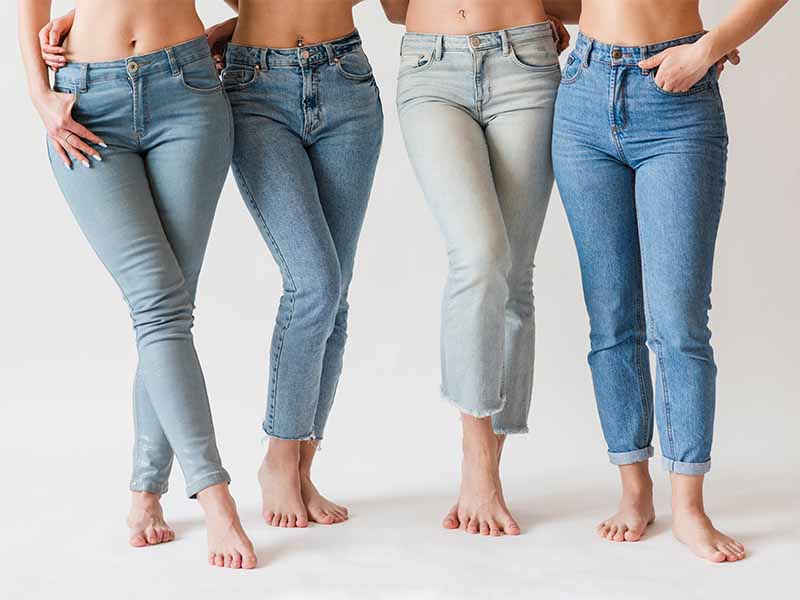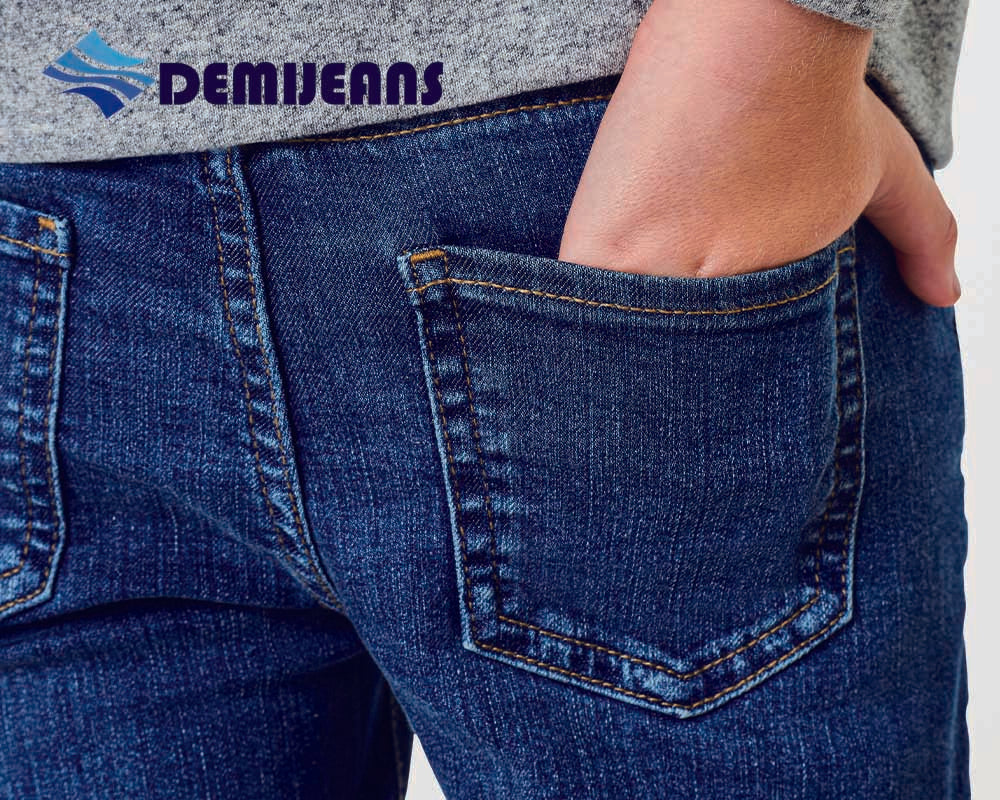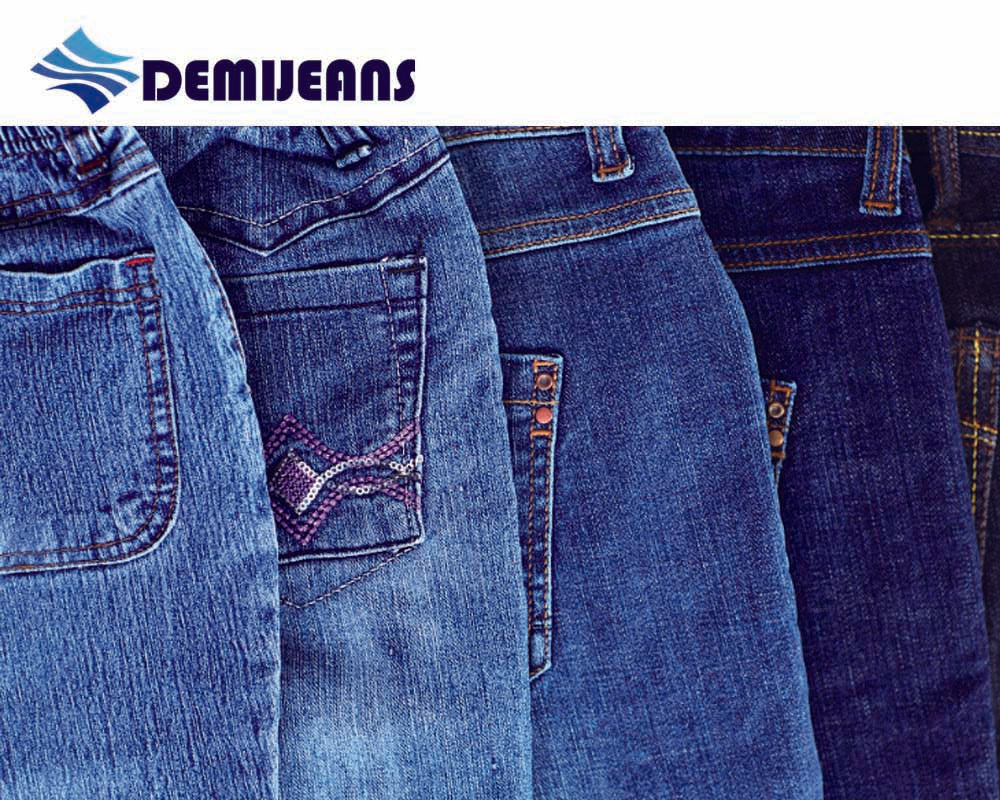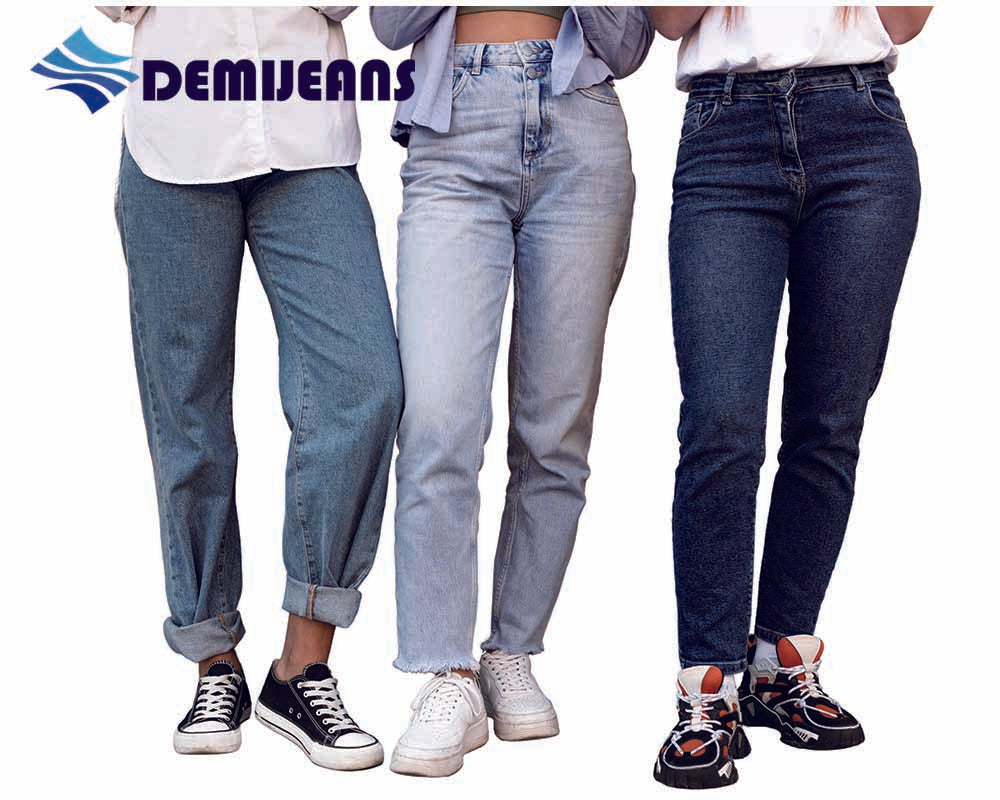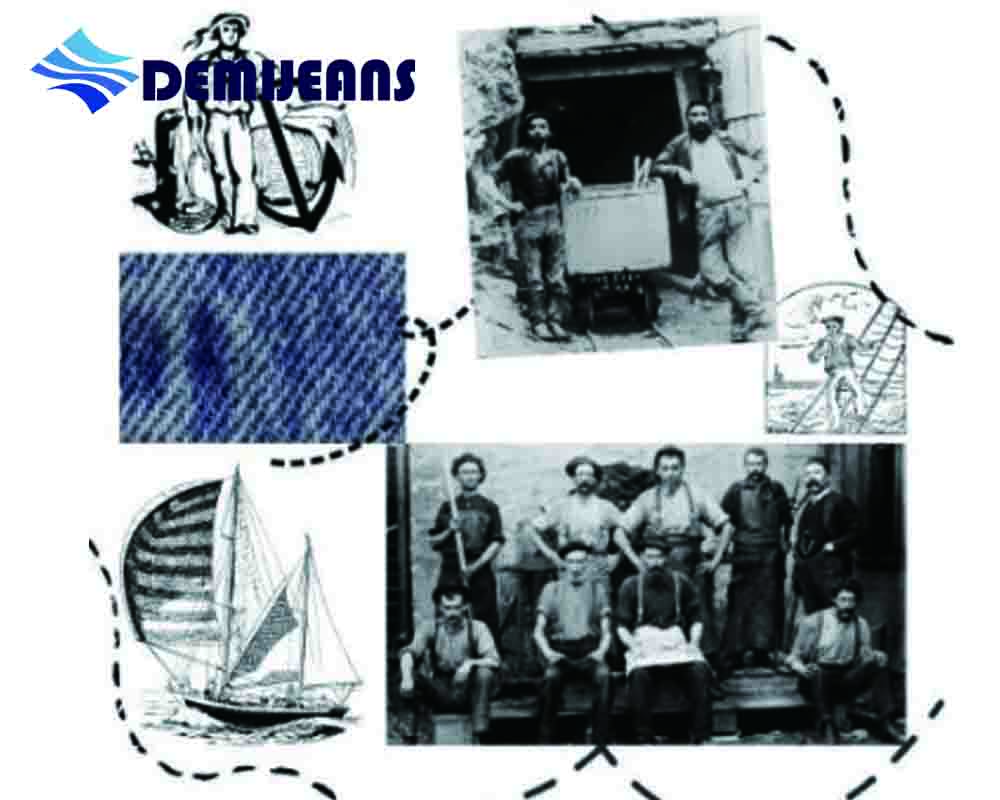At present, the common denim fabrics mainly include: elastic, non-elastic, slub, non-slub, linen, cotton, mercerized, coated and other high-quality fabrics.There are also various denim fabric types including ordinary denim, combed denim, polyester-cotton denim, stretch denim, bamboo denim, ring-spun denim, gold and silver stripes, linen denim and other series.
How to distinguish different types of denim?
First of all, according to the thickness of denim, it is divided into 4.5oz, 6oz, 8oz, 10oz, 11oz, 12oz, 13.5oz, 14.5oz, etc.
4.5oz is very thin and is often used for women’s vests and sleeveless shirts in summer; 14.oz is very thick and can be used for men’s cotton-padded clothes in winter; and most of the jeans we often wear range from 8oz to 12oz. .
In terms of the types of denim fabrics, it can be divided into plain weave, twill, herringbone, interlaced, slub, dark, flocked denim, etc... In terms of composition, denim is divided into combed and carded, with 100% cotton , with stretch (Lycra), cotton and linen blends, and Tencel...
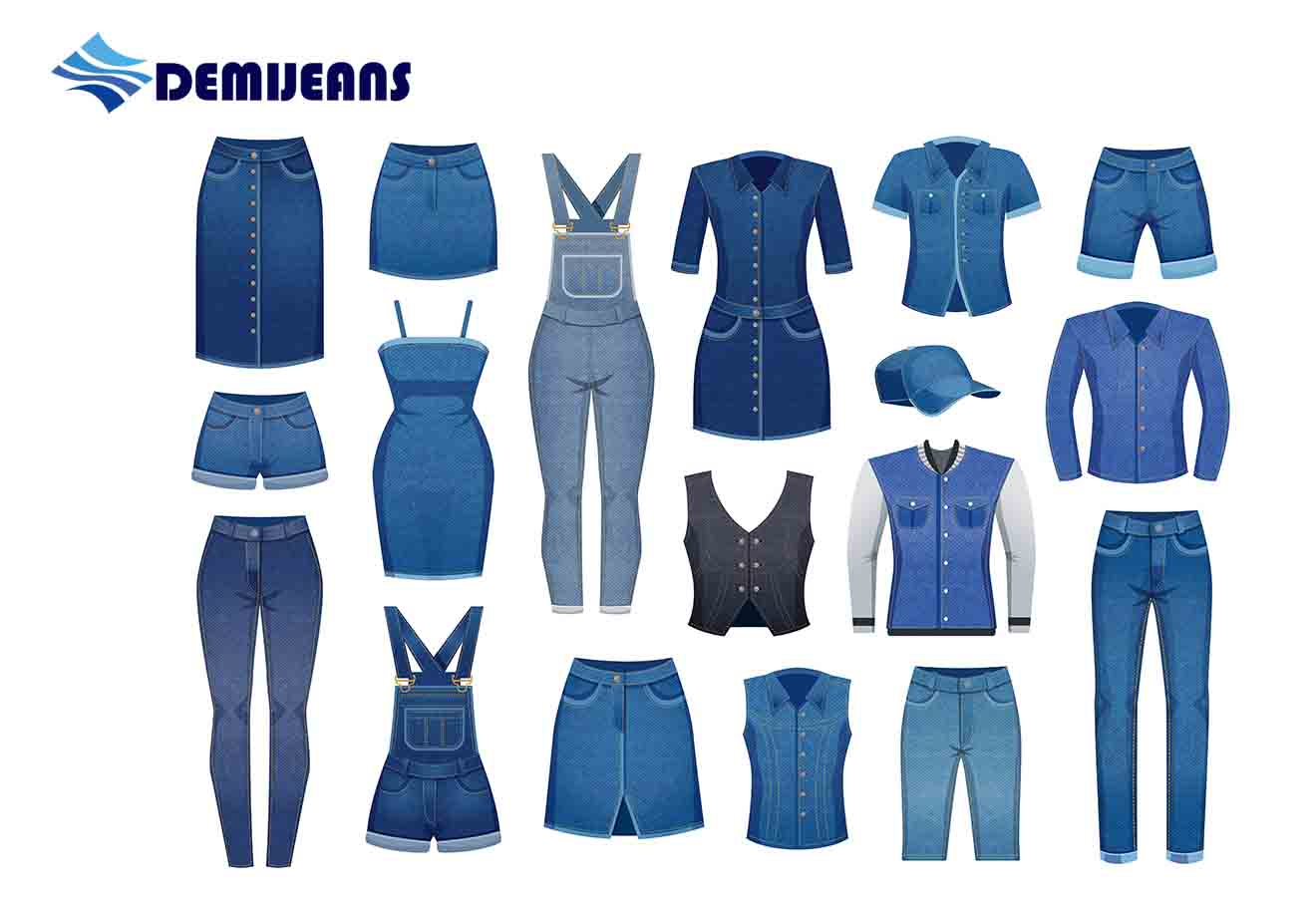
denim fabric
Denim fabric technology characteristics
How to sew a denim garment, which is also the key to designing denim garments:
Stitching thread: Most of them are 2-point single-sided double top-stitching thread, there are also 2-point single-side top-stitching thread, and 2-point double-sided double top-stitching thread. The stitching thread color is generally khaki (such as contrasting color threads) and there are also matching threads. Note that it is used with washed fabric. color line. Special process lines such as zigzag lines. Thick hand embroidery thread. Beat dates.
Ingredients: Most jeans use I-shaped buttons, four-button buttons, rivets, eyelets, leather tags, metal zippers, etc.
Marks: including main mark, size mark, wash mark, flag mark, side mark, etc...
In the past two years, some big brands have introduced three-dimensional tailoring, adding more pleats or an extra surface at the knees to better enhance the freedom of movement of jeans... The cutting of denim suits can reflect the skills of a pattern maker, especially It is made of high elasticity, so it is difficult to make the sleeves flat, wrinkle-free, and beautiful in appearance! Different garments require different denim fabrics.
Denim decorative craftsmanship
In the past two years, the trend of denim has been different from the past. In addition to paying great attention to the changing design of washing water, it also attaches great importance to the decorative craftsmanship of denim:
♦ For denim raw edges, cut the jeans to the hem and trim the trousers with scissors to make them ragged, and add special threads; many big brands also do this...
♦ Add machine embroidery, including computer machine embroidery pattern design...
♦ Hot drill, this kind is very popular in the Russian market...
♦ Appliqué embroidery, hand embroidery, bead embroidery, very craftsmanship and design...
♦ Glue printing: But be careful, it will feel hard and the pattern will easily fall off when washed...
♦ Laser: burns away all the colors of the cloth, revealing the color of the cloth itself, with a rendering effect.
Denim can also be matched with different fabrics, such as wool, imitation leather, corduroy, thick knits (fleece cloth, sweatshirt fabric), etc.; and denim can be made in many styles, including five-pocket jeans and denim shirts , denim jackets, skirts, coats, etc. This is also where creativity and talent are reflected.
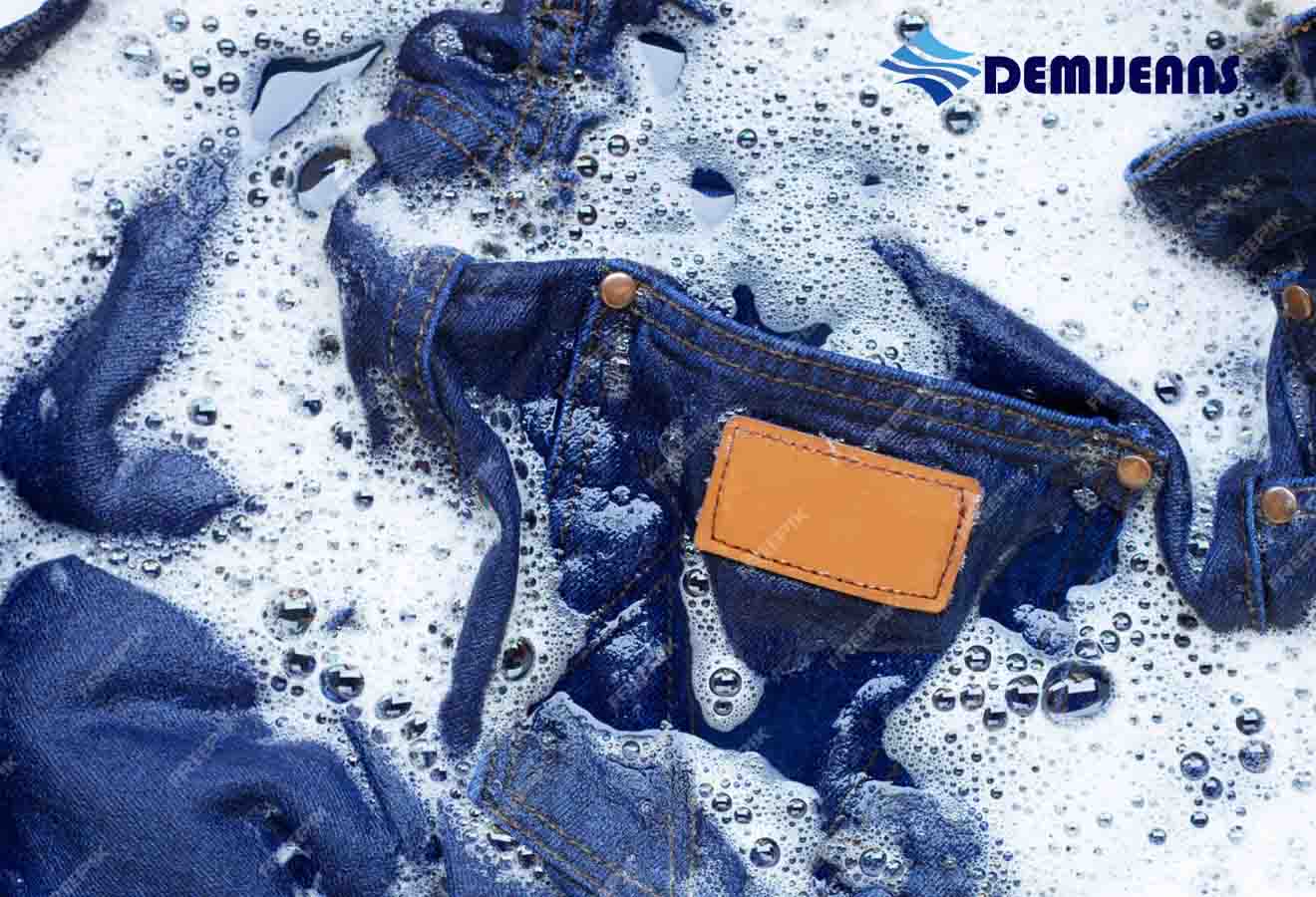
fabric
ways to wash denim
♦ General cleaning
Ordinary washing changes the washing we are familiar with to mechanization. The water temperature is around 60-90°C. Add a certain amount of detergent. After about 15 minutes of ordinary washing, rinse with clean water and add softener to make the fabric more durable. Soft, comfortable, visually more natural and cleaner.
♦ STONE WASH
Stone washing is to add a certain size of pumice stone to the washing water to polish the pumice stone with the clothes. The water level in the polishing tank is set to a low level where the clothes are completely soaked, so that the pumice stone can be in good contact with the clothes. Yellow stone, white stone, AAA stone, artificial stone, rubber balls, etc. can be used for washing to achieve different washing effects. After washing, the cloth surface will appear gray and old, and the clothes will be slightly to severely damaged.
♦ ENZYME WASH
Enzyme is a kind of cellulase, which can degrade the fiber structure under a certain pH value and temperature, so that the cloth surface can fade and delint more gently (producing a "peach skin" effect), and obtain lasting softness. Effect. Stones can be used together with or instead of stones. If used together with stones, it is usually called ENZYME STONE WASH.
♦SAND WASH
Sand washing uses some alkaline and oxidizing additives to make the clothes have a certain fading effect and a sense of staleness after washing. If it is combined with stone grinding, a layer of soft, frosty white fluff will be produced on the surface of the fabric after washing, and some softeners will be added. It can make fabrics soft and soft after washing, thereby improving wearing comfort.
Denim fabric production and processing process
♦ Ring-spun denim
Ring yarn is a kind of cotton yarn, which is divided into open-end spinning (oe) and ring spinning (r). Ring-spun denim refers to the yarn spun by ring spinning. Generally, ring spinning is more expensive than open-end spinning. Ring spinning improves the shortcomings of coarse yarn spinning, such as short length, low production efficiency, and many knots. The feel and drape of ring yarn denim are better than those of air-spun yarn, and after being washed, there will be slubs. shape style, giving it a stronger development momentum.
♦ Warp and weft slub denim
A yarn with the same thickness from top to bottom is called light yarn. If it is thick and thin in a regular pattern, it is called slub yarn. There are long slubs and short slubs. Some denim also looks like bamboo on the surface. knots, but thick and thin yarn. There are also cloths woven by ring spinning that look like bamboo.
♦ Ultra-indigo dyed denim
In the past, indigo washing deliberately made the indigo dye penetrate the fiber core very lightly. In this way, when the denim garment was washed and processed, the extremely thin layer of dye on the surface of the yarn was rubbed away, revealing more white yarn core, making the color It fades quickly, thereby achieving the effect of fading immediately after a short period of scrubbing. Contrary to the past indigo washing process, the penetration of the dye is required to be particularly good, so that the denim garment can obtain a deep and bright color after grinding and washing.
♦ Colored denim
The so-called overprinted denim is based on ordinary fabrics, desizing and washing, and then dyeing it again with reactive dyes. Since the original warp yarn is blue and the weft yarn is white without dyeing, the effect produced by the warp and weft yarns after dyeing again is different, so there will be a special two-color effect. After this process is made into garments, there will be more color registration, but the fabric will have less color registration. Because the secondary process is more cumbersome and the cost is higher.
♦ What color denim?
Colored denim is because there is only one blue color in the indigo dye spectrum used to dye denim. Therefore, in order to obtain colors other than blue, other dyes must be used for dyeing. It is usually dyed with reactive sulfur vat dyes, so it is called colored denim, also called colored denim.

